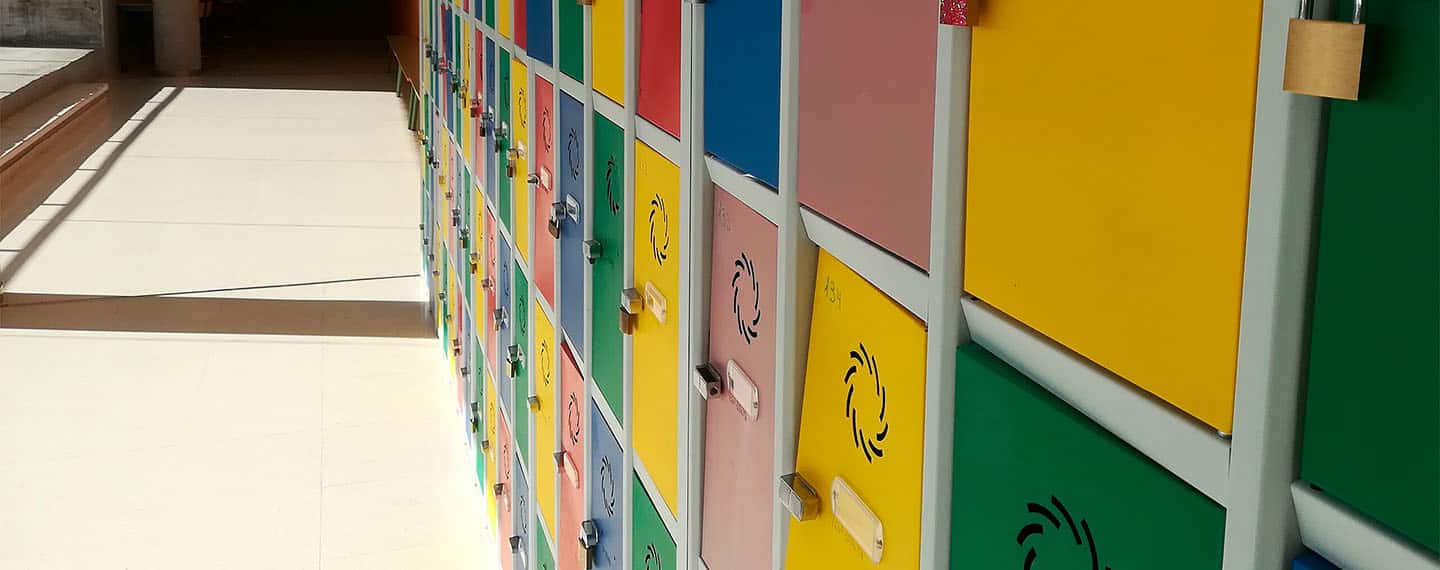First the bad news. Spain’s mean performance for science, mathematics and reading in the OECD’s PISA tests for 15-year-olds in 2022 was the worst since the OECD’s Programme for International Student Assessment was launched in 2000. And now the relative good news. As a result of the unprecedented drop in most countries’ results, largely because of the pandemic impact, Spain was closer to the OECD average (see Figure 1).
Figure 1. PISA mean scores for science, mathematics and reading literacy, 2022 and 2018 (in brackets)
| Science | Mathematics | Reading | |
|---|---|---|---|
| Finland | 511 (522) | 484 (507) | 490 (520) |
| Poland | 499 (511) | 489 (516) | 489 (512) |
| UK | 500 (505) | 489 (502) | 494 (504) |
| Germany | 492 (503) | 475 (500) | 480 (498) |
| US | 499 (502) | 465 (478) | 504 (505) |
| France | 487 (493) | 474 (495) | 474 (493) |
| Portugal | 484 (492) | 472 (492) | 477 (492) |
| Spain | 485 (483) | 473 (481) | 474 (477) |
| Italy | 477 (468) | 471 (487) | 482 (476) |
| OECD average | 485 (489) | 472 (489) | 476 (487) |
The last PISA results for 77 countries were for 2018, before the pandemic. Spain’s fall since then was not as dramatic, however, as Germany’s, for instance. While Spain’s results in science, mathematics and reading were two, eight and three points lower, respectively, than in 2018, Germany’s were down 11, 25 and 18 points, albeit from a higher starting point.
In Spain, 73% of students attained at least Level 2 proficiency in mathematics, significantly more than on average across the 37 OECD countries (69%).
Over 85% of students in Singapore, Maca, Japan, Hong Kong, Chinese Taipei and Estonia performed at this level or above. Some 6% of students in Spain were top performers in mathematics (Level 5 or 6), below the OECD average of 9%. Six Asian countries had the largest shares of students who achieved this, including Singapore (41%). In reading and science, Spain also attained a higher share of students with Level 2 or higher than the OECD average (76% and 79% compared to 74% and 76%).
Spain was hard hit by the pandemic, with lockdowns and school closures, although schools were closed for less time than on average across OECD countries (46% of students reported closures of more than three months as against 51%). Another possible factor is the relatively high share of immigrant students in Spain, which increased from 10% in 2012 to 15% in 2022, although there is no proof they performed worse than non-immigrant students. These students tend to have a more disadvantaged socio-economic profile than non-immigrant ones.
The Catalan government initially blamed its poor PISA results, almost the worst among Spain’s 17 regions, on having an over-representation of immigrant students taking the PISA tests. This reaction, perceived as xenophobic, was subsequently rectified and child poverty given as the main reason for the poor results. The region also did badly in the last PIRLS international test in reading comprehension for nine to 10-year-olds.
The PISA scores by region were markedly different (see Figure 2). The difference between the results of Castile & León, the best region in all three subjects, and the worst, the Canary Islands, was considerable: in science 33 points, in mathematics 52 and in reading 35. Education experts say a difference of 40 points (some say 30) is the equivalent of an academic course. In mathematics, 10 regions scored higher than the OECD average. The results of Castile & León, Asturias, Cantabria and Madrid in mathematics and reading were better than Finland’s, which used to be a star PISA performer.
Figure 2. PISA scores by region, 2022
| Science | Mathematics | Reading | |
|---|---|---|---|
| Castile & León | 506 | 499 | 498 |
| Asturias | 503 | 495 | 497 |
| Cantabria | 504 | 495 | 494 |
| Madrid | 502 | 494 | 496 |
| La Rioja | 500 | 493 | 487 |
| Galicia | 506 | 486 | 485 |
| Aragón | 499 | 487 | 488 |
| Navarra | 489 | 492 | 478 |
| Valencia | 483 | 473 | 482 |
| OECD average | 484 | 472 | 476 |
| Spain | 485 | 473 | 474 |
| Basque Country | 480 | 482 | 466 |
| Balearic Islands | 480 | 471 | 472 |
| Extremadura | 479 | 469 | 468 |
| Murcia | 482 | 463 | 468 |
| Catalonia | 477 | 469 | 462 |
| Castile-La Mancha | 475 | 464 | 468 |
| Andalusia | 473 | 457 | 461 |
| Canary Islands | 473 | 447 | 463 |
The PISA report came hard on the heels of one by Acción Educativa, an educational organisation, which said the bilingual (Spanish and English) programme in Madrid, followed by 52% of pupils in primary schools and 65% in secondary schools, was leaving many pupils with a poorer understanding of subjects. The survey among 1,174 teachers found that 98% of them believed the system had a negative effect on pupils’ learning abilities. Eight out of 10 teachers admitted that the level of learning in the classes taught in English was lower than in the classes in Spanish. While pupils’ English had improved, it came at the cost of not understanding some subjects well. Parents at some schools say teachers’ standard of English is not adequate.
Meanwhile, elements of the 2022 Democratic Memory (DM), intended to bring ‘justice, reparation and dignity’ to the victims of the 1936-39 Civil War and the subsequent Francoist dictatorship and ‘settle Spanish democracy’s debt to its past’, are now fully incorporated, as of the 2023-24 academic year, into the curriculum of primary and secondary school pupils.
The law came into effect when the Socialists governed in many of the 17 autonomous regions, all of which are responsible for education in their territories. This changed in May’s regional elections when the conservative Popular Party (PP) captured five regional governments from the Socialists: Valencia, Balearic Islands, La Rioja, Aragón and Extremadura, bringing the number they control on their own or with the hard-right VOX to 12.
The PP and VOX voted against the DM law in 2022 and both parties took it to the Constitutional Court in April 2023, which has yet to make a ruling, on the grounds that it infringes fundamental rights such as freedoms of expression and ideology. If the Court does not rule in their favour, a future PP government would probably scrap the law.
The Basque Country, Galicia and Catalonia, which have co-official languages, and three other regions have to devote 50% of school teaching hours to what are called the enseñanzas mínimas –the basic aspects of the curriculum set by the national Education Ministry in consultation with the regions that schools are obliged to teach– and the rest of regions 60%. The content for the rest of the time is decided by the regions. In extreme cases, a region’s refusal to implement the enseñanzas mínimas or distort them can end up with a court case.
From the educational standpoint, the Democratic Memory Law does just cover the period between Franco’s coup against the democratically-elected Republican government in 1936, which sparked the civil war, and 1975, when the dictator died (the period covered by the earlier Historical Memory Law of 2007), but goes much further back to 1812 and the promulgation of the Constitution of Cádiz, one of the allegedly most liberal of its time and one of the earliest codified constitutions in the world.
The law, as regards schools, is seen as a tool for civic pedagogy and the defence of democratic values and principles and civil rights. To some extent, it replaces the Education for Citizenship course, approved in 2006 by the Socialist government of José Luis Rodríguez Zapatero, and eliminated in 2012 by the PP government of Mariano Rajoy, which had long opposed it and replaced it with a civics course ‘free of controversial issues’ and ‘not susceptible to ideological indoctrination’.
Judging by the results of a recent survey in 22 countries conducted by the International Association for the Evaluation of Educational Achievement, students in Spain know more about the environment than how democracy works. More than 80% of respondents knew a lot about how to protect the environment, but only 38% how to vote in elections (see Figure 3).
Figure 3. Civics knowledge (% of 14-year-old students who reported having learned the following to a moderate or large extent)
| Spain | ICCS average | |
|---|---|---|
| How to protect the environment | 81 | 81 |
| How to vote in elections | 38 | 54 |
| How laws are introduced and changed | 34 | 53 |
| How citizen rights are protected | 46 | 58 |
| How the economy functions | 41 | 53 |
This needs to change.



